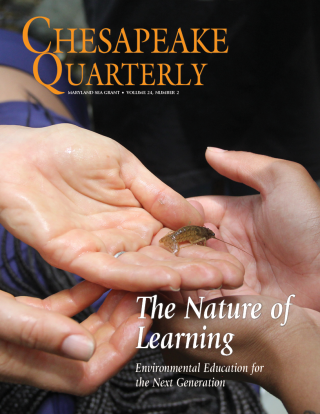What did you learn about wetlands?
Explanation
During this phase of the lesson, students will first respond to a writing prompt that summarizes the main concepts of the Exploration phase. After they have completed this, the lesson switches from a student-centered format to a teacher-centered one. The teacher will show the students a slideshow of Dyke Marsh (or other tidal freshwater marsh being used) featuring the distribution of plant communities. The classroom teacher can use this time to ask questions to determine student understanding and answer any remaining student questions. The students should be encouraged to compare the actual marsh pictures to how they had envisioned the marsh as they created their profile.
Objectives
Students will clearly communicate in writing what they have learned about the effect of tides and water level on wetland plant communities. Through a slide show, students will see actual photographs of plants in a tidal freshwater marsh, with a focus on their location in the marsh relative to elevation and water inundation.
Lesson Materials
Slide show highlighting marsh plants
Computer projector
Procedures
1. Using the completed topographic profiles for reference, ask the students to respond to the following prompts:
Describe how Dyke Marsh (or other freshwater tidal marsh) changes as you travel inland from the Potomac River.
Discuss how tides and elevation affect the amount of inundation in a particular area of the marsh.
Describe the distribution of plant communities in the marsh and why you will find different plants at different elevation levels.
2. After students have completed their responses, show pictures taken at Dyke Marsh (or other tidal freshwater marsh) that clearly illustrate the stratification of the plant communities due to elevation and inundation.
3. Through questions and discussions during the slide show, make sure that the students understand how tides and elevation both determine the amount of time that an area will spend inundated, which in turn affects what plants grow there. If possible, a field trip to the marsh would be a wonderful alternative to the slide show!



